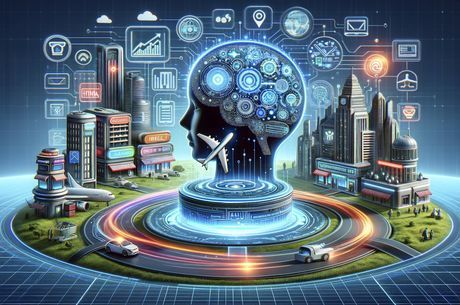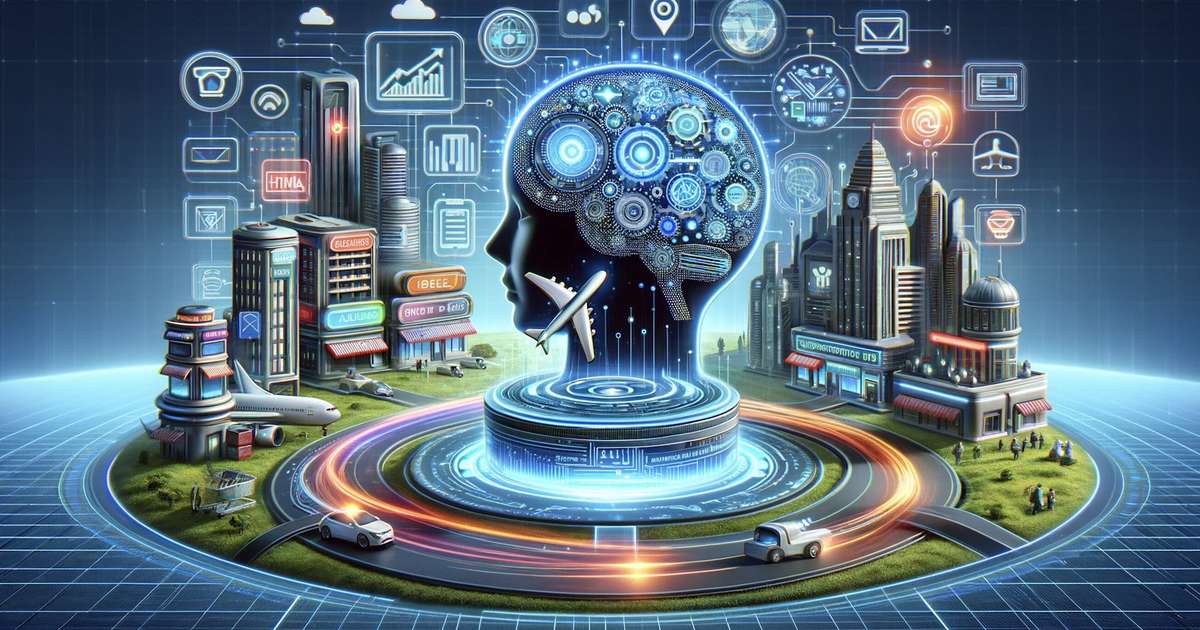
TRANSITIONING FROM HTML TO LLMs
The present developments in generative synthetic intelligence (AI) usually are not merely enhancing the operational fashions of corporations; they’re poised to redefine them essentially. This paradigm shift, which we might solely be starting to witness, suggests a profound transition in the best way internet interfaces are conceptualized and utilized. From a hypothetical perspective, AI instruments resembling ChatGPT are projected to doubtlessly turn into the first, or in some instances, the only interfaces for internet entry within the foreseeable future. This transformative shift could be characterised by communication predominantly managed by AI-driven chatbots. These chatbots would function on a framework that integrates and synthesizes knowledge from various sources, together with journey web sites and different sector-specific platforms.
A notable occasion of this rising development is the current implementation of OpenAI’s APIs inside Reserving.com’s AI Journey Planner. This integration, whereas preliminary and considerably modest, is indicative of a broader motion in direction of AI-centric operational fashions. It posits a future the place AI instruments like ChatGPT might transcend their present roles as mere processors of exterior knowledge. As a substitute, they might evolve into major aggregators and distributors of knowledge, significantly in sectors like journey. Such a growth would signify a pivotal reversal within the conventional digital ecosystem – a transfer from a dynamic the place platforms like Expedia are augmented by OpenAI’s APIs, to at least one the place OpenAI’s capabilities essentially drive and form the Expedia platform. This evolution might herald a radical transformation within the structure and interface of the World Extensive Net as we all know it. On this envisioned future, the traditional apply of navigating by a number of web sites or proprietary purposes might turn into out of date. Customers may shift to interacting completely by one (or a number of) AI-powered chatbots. These chatbots, not not like “superapps,” would parallel platforms like WeChat of their multifunctionality however could be distinct of their foundational expertise, leveraging the capabilities of enormous language fashions (LLMs) reasonably than conventional app-based frameworks. This alteration represents a transition from an informative internet, reliant on normal HTML-based consumer interfaces and SEO (search engine optimization) methods, to a generative internet. This generative internet could be underpinned by the subtle algorithms of LLMs and pushed by a brand new paradigm of search AI (SAI), marking a major departure from established internet interplay methodologies.
IN VINO VERITAS
In fact, I hold adopting my ordinary Socratic method in considering the potentialities of AI integration, and the idea continues to be forming in my thoughts. This is how this thought emerged: I just lately purchased a bottle of wine and wished to examine its high quality. After failing to seek out info by Google Lens, I begrudgingly re-downloaded Vivino, an app I seldom use and continuously uninstall. This expertise sparked the concept: what if ChatGPT built-in Vivino’s APIs? Think about scanning a wine label and getting outcomes immediately from ChatGPT. Envision a centralized AI bot, powered by a myriad of APIs, with the World Extensive Net as its foundational infrastructure and ChatGPT performing because the consumer interface. This amalgamation might mark a major shift from the standard reliance on web sites and standalone purposes to a extra unified, AI-mediated internet interplay. Ideally, a consumer might scan a wine label, obtain a direct analysis of its high quality, after which seamlessly transition to inquiries concerning the wine’s provenance, strategies for journey locations associated to its origin, suggestions for native actions, and even instruments for speaking with locals, all facilitated by a single AI interface. Projecting this trajectory ahead, I speculate that inside a span of 5 years, the panorama of the Net may evolve into an entity akin to Perplexity – an interconnected, AI-driven ecosystem. This evolution wouldn’t merely be a technological development however a redefinition of how we work together with the digital world, converging specialised functionalities right into a cohesive, AI-centric consumer expertise. A future the place the boundaries between particular person purposes blur.
WAY TOO MANY APPS
Generative Pre-trained Transformers and LLMs have gained prominence as flagbearers of AI’s potential within the B2B sector. But, not less than in my private opinion, the true essence of this technological evolution resides not merely within the user-facing purposes like ChatGPT however within the underlying APIs that energy them. On this situation, the proliferation of digital gadgets, aptly encapsulated within the acronym WTMD (Means Too Many Units), extends past bodily devices to embody the huge array of internet sites and purposes. This saturation of digital assets posits the emergence of a bot-based aggregator, which could be the pure development within the digital epoch. The trajectory of digital evolution has seen a shift from web-based platforms to cellular purposes and is now probably veering in direction of AI-powered assistants. How this may differ from the Siri/Alexa paradigm (and its failure), you may argue? Regardless of Siri’s set up on over 500 million gadgets and its use by roughly 250 million smartphone customers, ChatGPT’s voluntary consumer base of 100 million month-to-month lively customers presents a unique dynamic.
CONSENSUS REALITY
The present norm of sifting by a mess of internet sites and purposes is a conference born out of digital evolution reasonably than an immutable actuality. Tracing the historic trajectory, the digital panorama started with web sites, which have been then listed by search engines like google. This led to the creation of metasearch engines, which in flip listed these search engines like google. The appearance of cellular expertise introduced forth purposes designed to reinforce consumer expertise, subsequently resulting in the event of app shops to prepare this burgeoning ecosystem.
At the moment, we discover ourselves in a meta-stage: developing platforms to mixture different platforms, which themselves are aggregators. With over 1.13 billion web sites and eight.93 million apps (excluding knowledge from wearables, gaming consoles, and IoT gadgets), the digital world is ripe for a transformative change. An AI-powered bot as an aggregator presents itself as a logical and mandatory evolution on this context. On this future panorama, the distinctions between numerous digital platforms blur, fostering a extra built-in and seamless consumer engagement with the digital world. Customers, unshackled from the necessity to traverse a labyrinth of apps and web sites, might entry info and providers by intuitive, conversational interfaces. This potential shift in direction of AI assistants as the first medium of digital interplay might considerably alter how we entry, course of, and make the most of info. It suggests a future the place info consumption, decision-making, and digital interplay are streamlined -and maybe extra aligned- with human cognitive and conversational patterns. Whereas speculative, this idea opens up thrilling avenues for exploration and growth within the realm of digital expertise, doubtlessly resulting in a extra built-in, environment friendly, and user-centric digital expertise. As a result of “The Future” as Mickey Newbury used to sing, “is Not What It Used to Be”.

